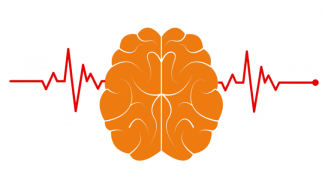Early biomarkers are needed to identify individuals at high risk of preclinical Alzheimer's disease and to better understand the pathophysiological processes of disease progression. Preclinical Alzheimer's disease EEG changes would be non-invasive and cheap screening tools and could also help to predict future progression to clinical Alzheimer's disease. However, the impact of amyloid-β deposition and neurodegeneration on EEG biomarkers needs to be elucidated.
A study conducted by Sinead Gaubert and Stéphane Epelbaum at Institut du Cerveau - ICM, included participants from the INSIGHT-preAD cohort, which is an ongoing single-centre multimodal observational study that was designed to identify risk factors and markers of progression to clinical Alzheimer's disease in 318 cognitively normal individuals aged 70-85 years with a subjective memory complaint. They divided the subjects into four groups, according to their amyloid status (based on 18F-florbetapir PET) and neurodegeneration status (evidenced by 18F-fluorodeoxyglucose PET brain metabolism in Alzheimer's disease signature regions). The first group was amyloid-positive and neurodegeneration-positive, which corresponds to stage 2 of preclinical Alzheimer's disease. The second group was amyloid-positive and neurodegeneration-negative, which corresponds to stage 1 of preclinical Alzheimer's disease. The third group was amyloid-negative and neurodegeneration-positive, which corresponds to 'suspected non-Alzheimer's pathophysiology'. The last group was the control group, defined by amyloid-negative and neurodegeneration-negative subjects.
Researchers analysed 314 baseline 256-channel high-density eyes closed 1-min resting state EEG recordings. EEG biomarkers included spectral measures, algorithmic complexity and functional connectivity assessed with a novel information-theoretic measure, weighted symbolic mutual information. The most prominent effects of neurodegeneration on EEG metrics were localized in frontocentral regions with an increase in high frequency oscillations (higher beta and gamma power) and a decrease in low frequency oscillations (lower delta power), higher spectral entropy, higher complexity and increased functional connectivity measured by weighted symbolic mutual information in theta band. Neurodegeneration was associated with a widespread increase of median spectral frequency. They found a non-linear relationship between amyloid burden and EEG metrics in neurodegeneration-positive subjects, either following a U-shape curve for delta power or an inverted U-shape curve for the other metrics, meaning that EEG patterns are modulated differently depending on the degree of amyloid burden.
This finding suggests initial compensatory mechanisms that are overwhelmed for the highest amyloid load. Together, these results indicate that EEG metrics are useful biomarkers for the preclinical stage of Alzheimer's disease.
Abstract of the article
Sources
EEG evidence of compensatory mechanisms in preclinical Alzheimer's disease.
Gaubert S, Raimondo F, Houot M, Corsi MC, Naccache L, Diego Sitt J, Hermann B, Oudiette D, Gagliardi G, Habert MO, Dubois B, De Vico Fallani F, Bakardjian H, Epelbaum S; Alzheimer’s Disease Neuroimaging Initiative, MEMENTO study group and the INSIGHT-preAD study group. Brain. 2019 Jun 18.
https://www.ncbi.nlm.nih.gov/pubmed/31211359







